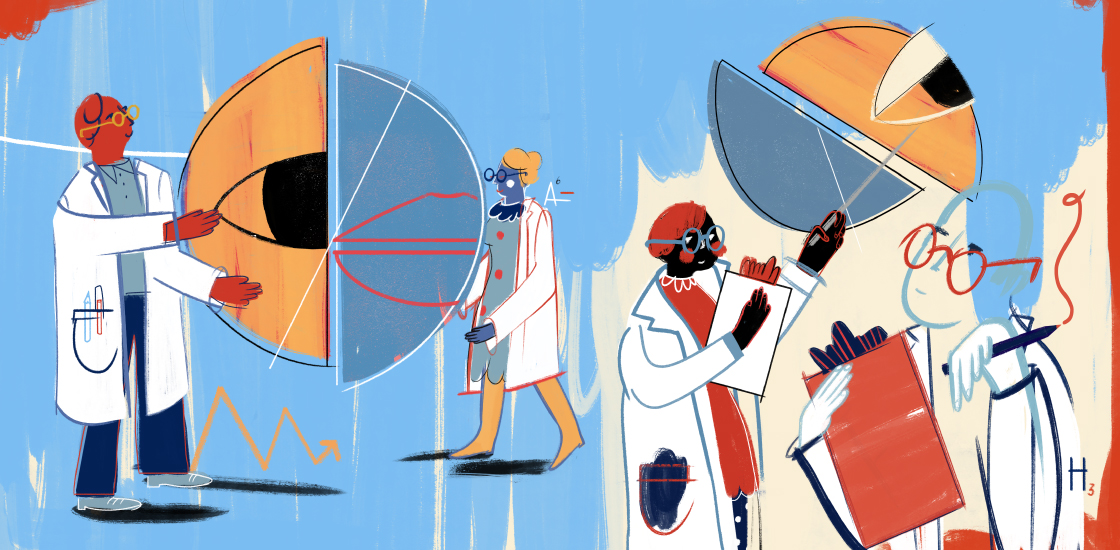New consortium may create projects, funding for autism research
A newly formed group of leaders from the U.S. National Institutes of Health (NIH) is poised to generate funding opportunities for child health research, including autism science.

A newly formed group of leaders from the U.S. National Institutes of Health (NIH) is poised to generate funding opportunities for child health research, including autism science.
The so-called Trans-NIH Pediatric Research Consortium brings together leaders from the NIH’s 27 institutes and centers. Launched in June, the group plans to meet every other month to identify research areas in the NIH’s portfolio that fall under the purview of more than one institute.
The conversations are designed to identify gaps in the portfolio and to flag areas of overlap, says Diana Bianchi, the consortium’s leader and director of the Eunice Kennedy Shriver National Institute of Child Health and Human Development (NICHD).
The ultimate goal is to create projects and opportunities for collaboration across institutes.
“This organizational-level interdisciplinary initiative is very likely a good thing to move each institute out of their respective silos,” says Joseph Piven, professor of psychiatry and pediatrics at the University of North Carolina at Chapel Hill.
When Bianchi became director of the NICHD in 2016, she noticed that funding for pediatric research at the NIH was dispersed across several institutes that did not interact. In 2017, this funding amounted to $4.2 billion.
“To my knowledge, the [leaders of the] institutes and centers had not met together to discuss their overall strategy,” she says.
Any opportunities for collaboration happened at random — when someone decided to pick up the phone and call another institute, for example, says Nina Schor, deputy director of the National Institute of Neurological Disorders and Stroke (NINDS).
Others at the NIH also noticed this problem; they brought it to the attention of NIH director Francis Collins, who approved the consortium’s formation in April and appointed Bianchi to lead it.
“[The new consortium] will make it more systematic,” Schor says.
Bigger pool:
At the consortium’s first meeting in June, Kelly King, director of the National Institute on Deafness and Other Communication Disorders, described her institute’s research priorities, including the hearing loss caused by kidney dysfunction. A representative from the National Institute of Diabetes and Digestive and Kidney Diseases pointed out that this area of study is also within the scope of that institute.
The two institutes are still working out how they might collaborate on this work. In other cases, institutes funding clinical trials might work together to allow participants to share data with related studies across institutes.
The initiative may also help the NIH support projects that a single institute within the organization cannot fund.
“For example, there are undoubtedly complex, incompletely understood gene-environment interactions at particular points in development that impact later brain function,” says Jeremy Veenstra-VanderWeele, professor of psychiatry at Columbia University. Some gene-environment interactions may contribute to schizophrenia — so for a study in this area, the National Institute of Mental Health is the likely benefactor. But if the interactions are likely to affect autism risk, the NICHD or the NINDS might be involved.
The consortium might also open up funding opportunities aimed at developing expertise in a particular area, such as training grants for early-career scientists interested in child health.
“More institutes can contribute money so that there’s an even bigger pool,” Bianchi says, “which means that more people could get these kinds of training grants.”
Recommended reading

New organoid atlas unveils four neurodevelopmental signatures

Glutamate receptors, mRNA transcripts and SYNGAP1; and more

Among brain changes studied in autism, spotlight shifts to subcortex
Explore more from The Transmitter
Can neuroscientists decode memories solely from a map of synaptic connections?

AI-assisted coding: 10 simple rules to maintain scientific rigor
